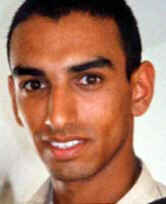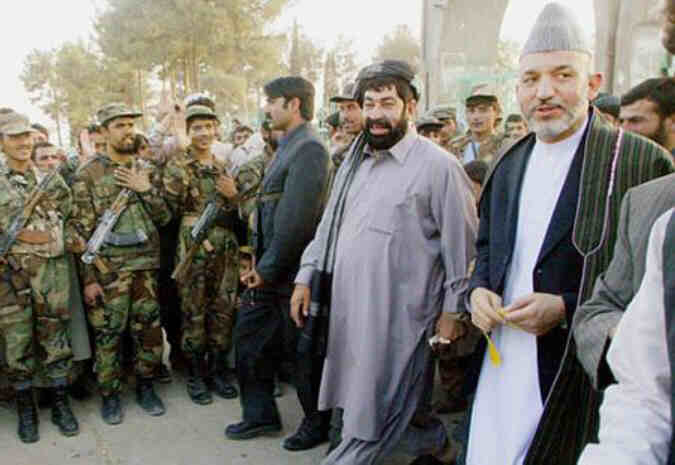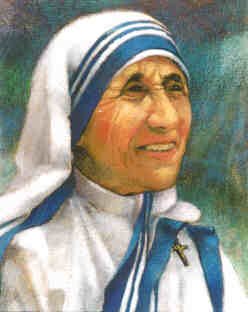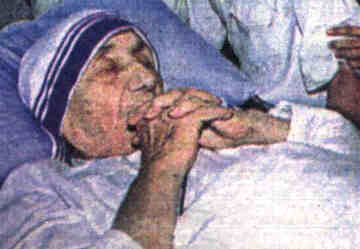Births
which occurred on a September 05:
1980 The St. Gothard Tunnel, the world’s
longest highway tunnel, opens ^top^
Stretching from Goschenen to Airolo,
Switzerland, the tunnel spans 16.3 km. Although tunnels have existed
since ancient times, the development of railroad and automotive transportation
led to an enormous expansion in tunnel building – both in the number
of tunnels and their length. However, this expansion was only made
possible by modern tunneling methods, particularly the use of steel
and concrete, as well as the modern mole. |
1957 On the Road by Jack Kerouac,
35, is published. ^top^
Kerouac’s free-flowing, madcap account
of several cross-country road trips struck a chord with the freedom-loving
youth of America, and brought Kerouac international fame. Regarded
as the foundation text for the Beat movement, the way that On
the Road was composed is as equally legendary as its spirited
story. The entire book was written on a single scroll of paper, made
up of 4-m long sheets of tracing paper that were taped together and
fed through a typewriter continuously, so that Kerouac would not have
to pause his train of thought. He wrote in fits of inspiration that
would last for days, fueled by amphetamine binges and lack of sleep.
The entire process took twenty days and ended with a single spaced,
36-m long scroll.
Dissatisfied
with fictional conventions, Kerouac developed a new, spontaneous,
nonstop, unedited method of writing that shocked more polished writers.
On the Road, written in the new style, is a formless book, it deals
with a number of frenetic trips back and forth across the country
by a number of penniless young people who are in love with life, beauty,
jazz, sex, drugs, speed, and mysticism but have absolute contempt
for alarm clocks, timetables, road maps, mortgages, pensions, and
all traditional American rewards for industry.
Kerouac
was born in March 1922 in Lowell, Massachusetts. The son of French-Canadian
parents, he learned English as a second language. In high school,
Kerouac was a football star and won a scholarship to Columbia University.
In World War II, he served in the Navy but was expelled for severe
personality problems. He became a merchant seaman. In the late 1940s,
he wandered the United States and Mexico and wrote his first novel,
The Town and the City. His later novels included The
Dharma Bums (1958), The Subterraneans (1958), and Lonesome
Traveler (1960). |
1965 Christopher Nolan Ireland, handicapped writer (Under
Eye of Clock)
1958 Dr. Zhivago by Pasternak appears
in the US. ^top^
Boris Pasternak's romantic novel, Dr.
Zhivago is published in the United States. The book was banned
in the Soviet Union, but still won the Nobel Prize for Literature
in 1958. Pasternak was born in Russia in 1890, and by the time of
the Russian Revolution was a well-known avant-garde poet. His work
fell into disfavor during the 1920s and 1930s as the communist regime
of Joseph Stalin imposed strict censorship on Russian art and literature.
During this time, Pasternak eked out a living as a translator. In
1956, he completed the book that would make him a worldwide name.
Dr. Zhivago was an epic love story set during the tumult
of the Russian Revolution and World War I. The book infuriated Soviet
officials, particularly Soviet leader Nikita Khrushchev. The Soviets
argued that the book romanticized the pre-Revolution Russian upper
class and degraded the peasants and workers who fought against the
czarist regime. The official Soviet press refused to publish the book
and Pasternak found himself the target of unrelenting criticisms.
Admirers of Pasternak's work, however, began secretly to smuggle the
manuscript out of Russia piece by piece. By 1958, the book began to
appear in numerous translations around the world, including an edition
in the United States that appeared on September 5, 1958. The book
was hailed as an instant classic, and Pasternak was awarded the Nobel
Prize for Literature in 1958.
None of the acclaim for the book helped Pasternak, though. The Soviet
government refused to allow him to accept the Nobel Prize, and he
was banished from the Soviet Writers Union. The latter action ended
Pasternak's writing career. Pasternak died in May 1960 from a combination
of cancer and heart disease. Dr. Zhivago refused to die with
him, though. In 1965, it was made into a hit movie starring Omar Sharif
as the title character. In 1987, as part of Soviet leader Mikhail
Gorbachev's democratic reforms, Pasternak, though dead for nearly
30 years, was readmitted to the union and his book was finally published
in Russia. |
1958 1st color video recording on magnetic tape presented,
Charlotte NC
1957 On the Road, by "beat"
author Jack Kerouac, is first published.
1927 Paul Adolph
Volcker Federal Reserve chairman. Before Alan Greenspan, the Federal
Reserve Board was chaired by Paul A. Volcker between 1979 and 1987. During
his tenure, Volcker waged war to curtail the rising tide of inflation that
plagued the nation during the 1970s.
1921 Jack Valenti
Pres of Motion Picture Assn of America
1914 Nicanor Parra,
poeta chileno.
1905 Arthur Koestler, Hungarian novelist
and essayist who wrote about communism in Darkness at Noon and
The Ghost in the Machine.
1903 Shiko Munakata,
Japanese printmaker who died in 1975. — MORE
ON MUNAKATA AT ART “4” SEPTEMBER
— LINKS
— Snow
in the Mountains — Woman
with Hawk — Fox
and Wolf — Monjû
Bosatsu
| 1879 Frank Jewett, a pioneer
in telephone, radar, recording, and other fields. He became president
of Bell Telephone Laboratories and helped build the company into a
major research center. Jewett was a professor at the Massachusetts
Institute of Technology until 1904, when he joined AT&T. At AT&T,
he designed long-distance telephone lines, including a transcontinental
line connecting New York and San Francisco. His work led to the first
transatlantic phone call. Later, he became president of Bell Telephone
Laboratories and a vice president at AT&T. He directed research on
a number of influential projects, such as the dial telephone, sound
motion picture, and the electric phonograph. He also served as president
of the National Academy of Sciences from 1939 to 1947. |
1859 Our Nig, by Harriet E. (Adams)
Wilson, 31, the first US novel by an African American
woman. Full title: Our Nig; or, Sketches from the Life of a Free
Black, in a Two-Story White House, North. Showing That Slavery's Shadows
Fall Even There. By "Our Nig." (1859). It treats of racism in
the pre-Civil War North. Our Nig is largely autobiographical.
Its protagonist, Frado, is of mixed race. Abandoned by her white mother,
she is mistreated by the bigoted white family who employ her as an
indentured servant. She eventually marries, then is deserted by her
husband. — HARRIET WILSON ONLINE:
Our
Nig: or, Sketches from the Life of a Free Black
Our
Nig: or, Sketches from the Life of a Free Black (another
site) |
1847 Jesse James, in Clay
County, Missouri. Who would have guessed that the innocent newborn
would grow up to be a vicious outlaw, or that the outlaw would be
transformed by legend into a modern Robin Hood?
Jesse
and his older brother Franklin lost their father in 1849, when the
Reverend Robert James abandoned his young family and disappeared forever
into the California gold fields. Their mother, Zerelda, quickly remarried,
but rumor had it that their new stepfather treated Jesse and Frank
poorly, and a third husband soon followed. Perhaps it was a violent
and unstable family life that led the young Jesse and Frank into lives
of crime. Regardless, it is certain that the brothers first learned
to kill during the Civil War. As Confederate sympathizers, both Jesse
and Frank joined William Quantrill's vicious Missouri guerilla force,
and Jesse participated in the cold-blooded murder of 25 unarmed Union
soldiers in August 1863.
When
the war ended, neither man felt any enthusiasm for the drab life of
a Missouri farmer—earning a living with their guns seemed easier and
more exciting. Joining a motley band of ex-soldiers and common thieves,
Jesse and Frank staged the first daylight bank robbery in US history
on Valentine's Day in 1866, making off with $57'000 in Liberty, Missouri.
For the next decade the James Gang
would steal many thousands more from banks, stores, stagecoaches,
and trains. The boldness of their crimes and the growing resentment
among Westerners against big railroads and robber barons led some
to romanticize Jesse and Frank. Popular dime novels created largely
fictional versions of the James brothers as modern-day Robin Hoods
who stole from the rich to give to the poor.
In reality, the James brothers' crimes preyed as much on the common
folks as on the very rich, and they did little to spare the lives
of innocents caught in the crossfire. The Robin Hood myth conveniently
ignores the little girl shot in the leg during a botched robbery at
the Kansas City Fair, the train engineer killed when the James Gang
derailed his locomotive, or the dozens of other innocent bystanders
murdered or maimed by Jesse, Frank, or their gang.
Jesse
James was murdered on 03 April 1882, by gangster Robert Ford, to earn
a $10'000 reward offered by Thomas T. Crittenden, governor of Missouri.
A few months later, Frank James gave
himself up. He was tried for murder in Missouri and found not guilty,
tried for robbery in Alabama and found not guilty, and finally tried
for armed robbery in Missouri and again released. A free man, he retired
to a quiet life on his family's farm, dying on 18 February 1915 in
the room in which he was born on 10 January 1843. |
1834 Vicente Palmaroli González, Spanish painter.
1791 Giacomo Meyerbeer Vogelsdorf Germany, composer (Golt
Und Die Natur)
1774 Caspar-David Friedrich, German
artist who died on 07 May 1840. — MORE
ON FRIEDRICH AT ART “4” SEPTEMBER
— LINKS
— Landscape
with Solitary Tree — Cloister
Cemetery in the Snow — Large
Enclosure — Riesengebirge
— Wanderer
Above the Sea of Fog — Schlafender
Knabe — Tetscher
Altar, Gesamtansicht, Szene: Das Kreuz im Gebirge — a different
Kreuz
im Gebirge — Kreuz
und Kathedrale im Gebirge — Erinnerung
an das Riesengebirge — Kreidefelsen
auf Rügen — Der
Watzmann — Wald
im Spätherbst — Der
Morgen — Der
Sommer — Schiffe
im Hafen von Greifswald — Morgen
— Die
Lebensstufen — Wrack
im Eismeer — Das
Eismeer— Frau
vor untergehender Sonne — Mann
und Frau den Mond betrachtend — Verschneite
Hütte — The
Tree of Crows — View
from the Painter's Studio — Cemetery
at Dusk — Eldena
Ruin — Monastery
Graveyard in the Snow — On
board a Sailing Ship — Woman
on the Beach of Rügen — City
at Moonrise — Landscape
with Oak Trees and a Hunter — Abbey
in an Oak Forest — Evening
— Moon
rising over Sea — Port
by Moonlight — Largeness
— Landscape
in the Riesengebirge — 59
smallish images at www.geocities.com/Paris/Arc/5340/friedric.htm
1725 Jean
Etienne Montucla, French government official and historian
of mathematics who died on 18 December 1799. Author of Histoire des
recherches sur la quadrature du cercle (1754), Histoire des mathématiques
(1758)
1704 Maurice Quentin de la Tour,
French pastellist who died on 17 February 1788. — MORE
ON LA TOUR AT ART “4” SEPTEMBER
— LINKS
—
Self-Portrait — Self~Portrait
— Self-Portrait
(1964) _ detail
_ Another
version of the same self-portrait — Maurice,
Comte de Saxe, Maréchal de France — Mlle
Ferrand Meditating on Newton.
1667 Giovanni
Girolamo Saccheri, Italian Jesuit priest and mathematician
who died on 25 October 1733. Author of Euclides ab Omni Naevo Vindicatus
(1733), Logica Demonstrativa (1697), Neo-statica (1708),
Quaesita geometrica (1693).
1638 Louis XIV, king of France
(1643-1715) ^top^
He who ruled his country, principally
from his great palace at Versailles, during one of its most brilliant
periods and who remains the symbol of absolute monarchy of the classical
age. Internationally, in a series of wars between 1667 and 1697, he
extended France's eastern borders at the expense of the Habsburgs
and then, in the War of the Spanish Succession (1701-14), engaged
a hostile European coalition in order to secure the Spanish throne
for his grandson.
Louis was the
son of Louis XIII and his Spanish queen, Anne of Austria. He succeeded
his father on 14 May 1643. He was, nonetheless, a neglected child
given over to the care of servants. He once narrowly escaped drowning
in a pond because no one was watching him.
Louis was nine years old when the nobles and the Paris Parlement (a
powerful law court), driven by hatred of the prime minister Cardinal
Jules Mazarin, rose against the crown in 1648, beginning the long
civil war known as la Fronde, in the course of which Louis suffered
poverty, misfortune, fear, humiliation, cold, and hunger. These trials
shaped the future character, behavior, and mode of thought of the
young king. He would never forgive either Paris, the nobles, or the
common people.
In 1653 Mazarin
was victorious over the rebels and then proceeded to construct an
extraordinary administrative apparatus with Louis as his pupil. The
young king also acquired Mazarin's partiality for the arts, elegance,
and display. Although he had been proclaimed of age, the King did
not dream of disputing the Cardinal's absolute power. The war begun
in 1635 between France and Spain was then entering its last phase.
The outcome of the war would transfer European hegemony from the Habsburgs
to the Bourbons. In 1660 married Marie-Thérèse of Austria, daughter
of the King of Spain, in order to ratify peace between their two countries.
The childhood of Louis XIV was at an end, but no one believed him
capable of seizing the reins of power.
Mazarin died on 09 March 1661. On 10 March the King informed his astonished
ministers that he intended to assume all responsibility for ruling
the kingdom. This had not occurred since the reign of Henry IV. This
was not in accordance with tradition; Louis XIV's concept of a dictatorship
by divine right was his own. Louis viewed himself as God's representative
on earth and considered all disobedience and rebellion to be sinful.
He was backed up first by the great ministers Jean-Baptiste Colbert,
the Marquis de Louvois, and Hugues de Lionne, among whom he fostered
dissension, and later by men of lesser capacity. For 54 years Louis
devoted himself to his task eight hours a day; not the smallest detail
escaped his attention.
Despite
the use of pensions and punishments, the monarchy had been unable
to subdue the nobles, who had started 11 civil wars in 40 years. Louis
lured them to his court, corrupted them with gambling, exhausted them
with dissipation, and made their destinies dependent on their capacity
to please him. Etiquette became a means of governing. From that time,
the nobility ceased to be an important factor in French politics,
which in some respects weakened the nation.
Louis
XIV died on 01 September 1715
Louis Dieudonné naît au château
de Saint-Germain-en-Laye. Ses parents, Louis XIII et Anne d'Autriche,
sont d'autant plus heureux de sa naissance qu'ils l'espéraient depuis
plus de quinze ans. L'enfant succèdera à 5 ans à son père et restera
connu dans l'Histoire sous le nom de Louis XIV Le Roi-Soleil. |
1592 Jacopo Vignali da Pratovecchio, Italian painter who
died on 1664. — more
— The
Martyrdom of Saint Lawrence
1585 Armand Duplessis,
qui deviendra le Cardinal de Richelieu; ministre de Louis
XIII, il sera le véritable chef de gouvernement pendant 18 ans, de 1624
à 1642. Autoritaire, orgueilleux, d'une volonté inflexible, Richelieu veut
renforcer l'autorité du royaume. Il fonde en 1635 l'Académie Française,
qui reste une institution prestigieuse.
1568 Giovanni Domenico
"Tommasso" Campanella, Italian philosopher and poet.
CAMPANELLA ONLINE: (in English translation): The
City of the Sun.
1319 Pedro IV el Ceremonioso,
rey de Aragón.
1187 Louis VIII [Coeur-de-Lion] king
of France (1223-1226)
0943 Fundación del condado de Castilla.
(fecha en la que, en 1943, se conmemorará el milenario). |
 Deaths
which occurred on a September 05: ^top^
Deaths
which occurred on a September 05: ^top^ 2002
A Palestinian gunman, and Malik Grifat, 24 [photo >],
Israeli army 1st lieutenant, from the Bedouin town of Zarzir, an 08:30 by
a gunshot to the head from the gunman's Kalashnikov rifle, between the enclave
settlements Dugit and Nissanit in the northern Gaza Strip. An other soldier
on patrol with him is wounded. Other Israeli soldiers pursue and kill the
attacker.
2002
A Palestinian gunman, and Malik Grifat, 24 [photo >],
Israeli army 1st lieutenant, from the Bedouin town of Zarzir, an 08:30 by
a gunshot to the head from the gunman's Kalashnikov rifle, between the enclave
settlements Dugit and Nissanit in the northern Gaza Strip. An other soldier
on patrol with him is wounded. Other Israeli soldiers pursue and kill the
attacker.
 2002:
26 persons by powerful taxi bomb in a market in Kabul, Pakistan,
in front of shops selling televisions and satellite dishes (forbidden during
Taliban rule). Some 150 are wounded.
2002:
26 persons by powerful taxi bomb in a market in Kabul, Pakistan,
in front of shops selling televisions and satellite dishes (forbidden during
Taliban rule). Some 150 are wounded. 2001
2001